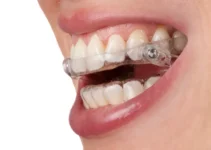Low ovarian reserve is a condition where the ovaries contain fewer eggs than expected for a woman’s age, significantly impacting fertility potential. This reproductive challenge occurs when both egg quantity and quality decline, making natural conception more difficult. Women with diminished ovarian reserve may experience reduced success rates with fertility treatments, shorter fertility windows, and potentially earlier onset of menopause. Several factors can contribute to this condition, including age, genetics, previous ovarian surgery, or medical treatments like chemotherapy. Understanding ovarian reserve is crucial for pregnancy planning, as early detection through hormone testing and ultrasound can help healthcare providers develop appropriate fertility treatment strategies.
Understanding Low Ovarian Reserve
Low ovarian reserve represents a significant challenge in reproductive medicine, characterized by a reduced quantity and quality of remaining oocytes in a woman’s ovaries. This condition directly impacts fertility potential and requires comprehensive medical understanding for effective treatment approaches.
Modern reproductive medicine has made significant strides in understanding how ovarian reserve affects fertility outcomes. Research indicates that women with diminished ovarian reserve often experience reduced success rates in natural conception and assisted reproductive technologies. However, innovative treatments like PRGF-Endoret® have shown promising results in improving endometrial conditions and reducing fibrotic tissue.
The management of low ovarian reserve requires a multifaceted approach, combining both diagnostic accuracy and personalized treatment strategies. Recent studies have demonstrated that early intervention and appropriate medical management can significantly improve reproductive outcomes.
Definition and Medical Context
Clinical Definition
From a clinical perspective, low ovarian reserve is defined as a reduced reproductive potential due to a decrease in the quantity and quality of oocytes within the ovaries. This condition is characterized by elevated FSH levels, decreased AMH levels, and reduced antral follicle counts.
Medical research has established that ovarian reserve assessment involves multiple parameters, including:
- Hormonal markers (FSH, AMH, Estradiol)
- Ultrasound evaluation of antral follicle count
- Age-related fertility decline patterns
- Previous reproductive history
Diagnostic Methods
The diagnosis of low ovarian reserve relies on several key diagnostic tools and markers. Anti-Müllerian Hormone (AMH) testing has emerged as one of the most reliable indicators, providing valuable insights into the remaining follicular pool.
Modern diagnostic protocols typically include:
- Blood tests for hormone level assessment
- Transvaginal ultrasound for follicle counting
- Clomiphene citrate challenge test
- Comprehensive medical history evaluation
Causes and Risk Factors
Common Causes
The etiology of low ovarian reserve is complex and often multifactorial. Primary factors include advanced maternal age, genetic predisposition, and autoimmune conditions affecting ovarian function.
Scientific research has identified several key causes:
- Chromosomal abnormalities
- Previous ovarian surgery
- Exposure to toxins or radiation
- Endometriosis and other reproductive conditions
Risk Factors
Understanding risk factors is crucial for early intervention and management. Lifestyle factors and medical history play significant roles in determining ovarian reserve status.
Key risk factors include:
- Advanced age (particularly over 35)
- Family history of early menopause
- Smoking and excessive alcohol consumption
- Certain medical treatments, especially chemotherapy
To learn more about managing low ovarian reserve and improving fertility outcomes, explore our related articles on advanced reproductive treatments and fertility preservation options. Understanding these aspects is crucial for making informed decisions about your reproductive health journey.
Impact on Fertility and Pregnancy
Low ovarian reserve significantly impacts reproductive potential, affecting both natural conception chances and pregnancy outcomes. Recent studies indicate that women with diminished ovarian reserve face up to a 50% reduction in their monthly probability of conception compared to those with normal ovarian reserve levels.
The relationship between ovarian reserve and fertility is complex, involving multiple factors including egg quality and hormonal balance. Advanced reproductive treatments, such as PRGF-ENDORET®, have shown promising results in improving endometrial thickness and reducing scarring tissue, potentially enhancing fertility outcomes.
Fertility Implications
Natural Conception Chances
Women with low ovarian reserve experience significantly reduced natural conception rates. Research shows that the monthly fecundity rate can drop to less than 8% in cases of diminished ovarian reserve, compared to 20-25% in women with normal ovarian reserve.
Key factors affecting natural conception include:
- Quantity of viable eggs available
- Quality of remaining eggs
- Hormonal environment
- Endometrial receptivity
Age-Related Factors
Age plays a crucial role in conjunction with ovarian reserve. Women over 35 with low ovarian reserve face compounded challenges, as both factors independently affect fertility. Studies indicate that the combination of advanced maternal age and low ovarian reserve can reduce conception chances by up to 75%.
Modern treatments like PRGF-ENDORET® have shown potential in addressing age-related fertility challenges by improving endometrial thickness by up to 33% and reducing fibrosis, which are crucial factors in successful conception.
Pregnancy Success Rates
Statistical Overview
Success rates vary significantly based on multiple factors. Clinical data shows:
- Natural conception rates: 5-10% per cycle
- IVF success rates: 15-25% per cycle
- Cumulative pregnancy rates: 30-40% over three cycles
The implementation of advanced treatments has shown promising improvements in these statistics, particularly when combined with proper medical intervention and timing.
Pregnancy Complications
Women with low ovarian reserve may face increased risks during pregnancy. Common complications include higher rates of miscarriage (approximately 20-25% compared to 15% in women with normal ovarian reserve) and increased risk of preterm delivery.
However, innovative treatments focusing on endometrial health and reducing fibrosis have shown potential in minimizing these risks and improving overall pregnancy outcomes.
Understanding the impact of low ovarian reserve on fertility and pregnancy is crucial for proper treatment planning. For more detailed information about specific treatments and management strategies, we encourage you to explore our related articles on fertility enhancement and reproductive technologies.
Treatment Options and Management
Managing low ovarian reserve requires a comprehensive approach combining medical interventions and lifestyle modifications. Recent advances in reproductive medicine have expanded the available treatment options, offering hope to women facing fertility challenges. Studies show that early intervention and personalized treatment plans significantly improve outcomes.
The selection of appropriate treatment strategies depends on various factors, including age, overall health, and specific fertility goals. Modern protocols often integrate conventional treatments with innovative approaches like PRGF-Endoret®, which has shown promising results in improving endometrial thickness and reducing scarring tissue. Treatment success rates vary, but research indicates that combining different approaches can enhance overall effectiveness. Patients should be aware that treatment outcomes are highly individual, and what works for one person may not work for another.
Medical Interventions
Fertility Treatments
Advanced fertility treatments have revolutionized the management of low ovarian reserve. In vitro fertilization (IVF) remains a primary treatment option, with specialized protocols designed for patients with diminished ovarian reserve. The introduction of techniques like PRGF-Endoret® has shown to increase endometrial thickness by up to 33%, significantly improving implantation chances.
Other key fertility treatments include:
- Controlled ovarian stimulation
- Intrauterine insemination (IUI)
- Egg donation programs
- Natural cycle IVF
- Mini-IVF protocols
Medication Options
Medication plays a crucial role in managing low ovarian reserve. Hormone replacement therapy and ovulation stimulation medications are commonly prescribed. These medications work synergistically with treatments like PRGF-Endoret® to reduce fibrosis and improve tissue quality. Common medications include:
- Gonadotropins
- Clomiphene citrate
- Growth hormone supplementation
- DHEA supplements
- CoQ10 supplements
Lifestyle and Support
Lifestyle Modifications
Lifestyle changes can significantly impact treatment success. Research demonstrates that maintaining a healthy weight, reducing stress, and following a balanced diet can optimize fertility treatment outcomes. Regular exercise, within moderate limits, has also shown positive effects on reproductive health.
Key lifestyle modifications include:
- Anti-inflammatory diet rich in antioxidants
- Stress reduction techniques
- Adequate sleep patterns
- Avoiding smoking and alcohol
- Regular moderate exercise
Support Resources
A strong support system is essential during fertility treatment. Professional counseling and support groups can help manage emotional challenges and provide valuable information. Many fertility centers now offer comprehensive support programs integrating both medical and emotional care.
For more information about managing low ovarian reserve and innovative treatments like PRGF-Endoret®, explore our related articles on fertility enhancement techniques and emerging reproductive technologies. Understanding your options is the first step toward making informed decisions about your fertility journey.
Understanding Low Ovarian Reserve and Fertility Treatment Options
Many women face fertility challenges due to diminished ovarian reserve. Understanding how this condition affects pregnancy chances and learning about innovative treatments like PRGF-Endoret® can help improve outcomes.
How Can Advanced Treatments Like PRGF-Endoret® Help Women with Low Ovarian Reserve?
PRGF-Endoret® represents a significant advancement in fertility treatment for women with low ovarian reserve. This innovative therapy works by reducing scar tissue and protecting against excessive fibrosis, which can improve the endometrial environment. Clinical studies have shown it may increase endometrial thickness by up to 33%, potentially enhancing implantation success rates and pregnancy chances. This treatment offers new hope for women who previously had limited options due to diminished ovarian reserve.




